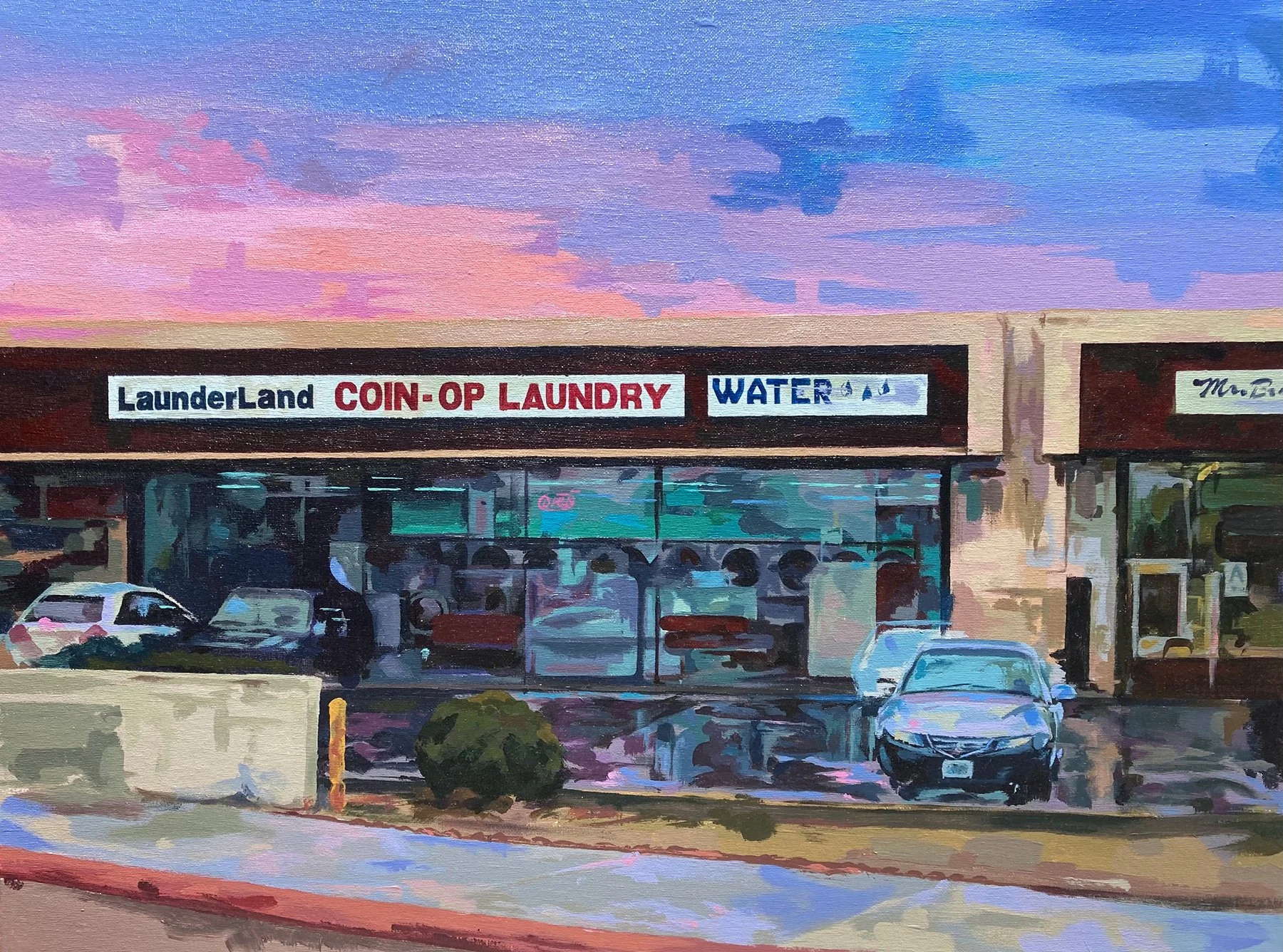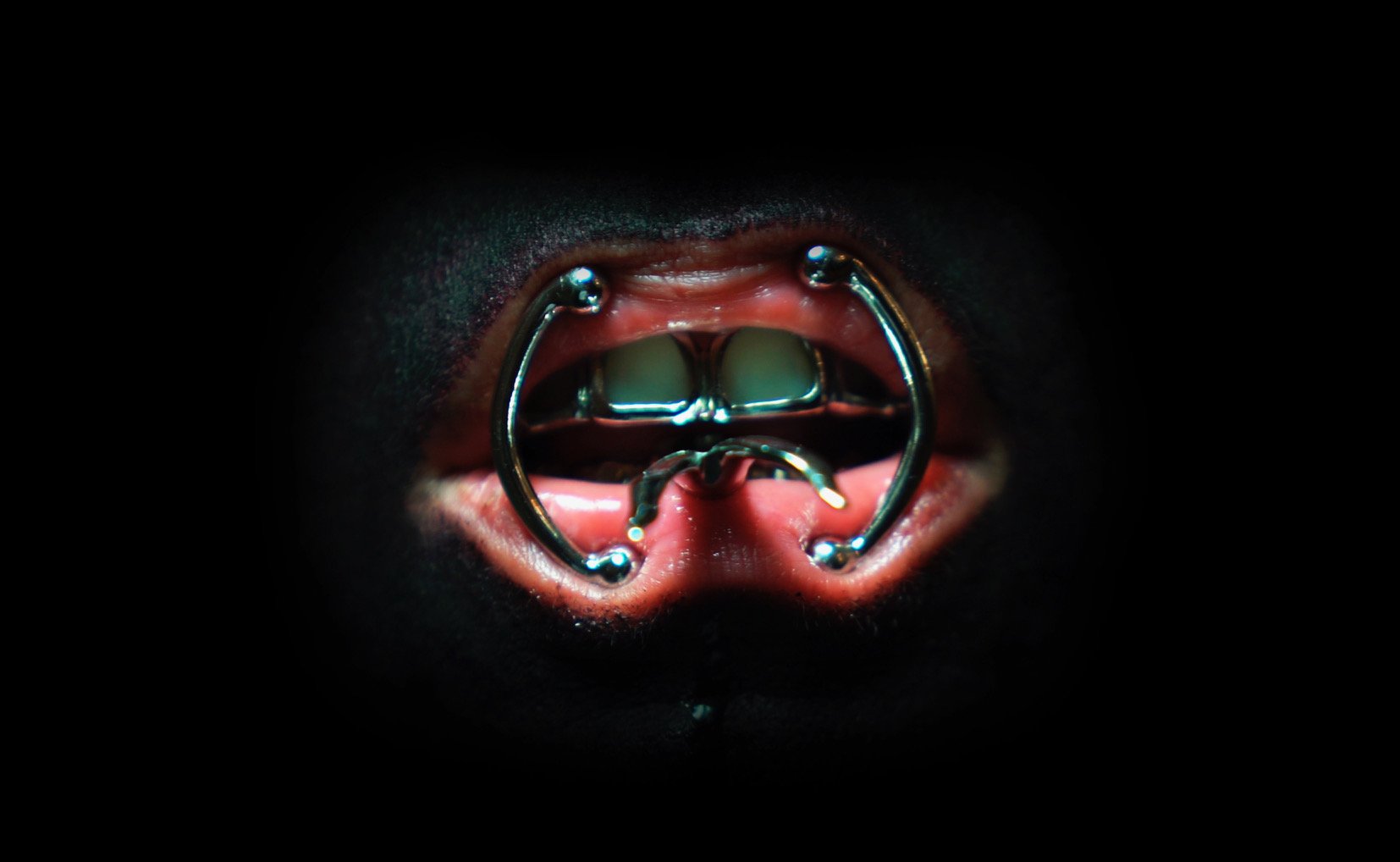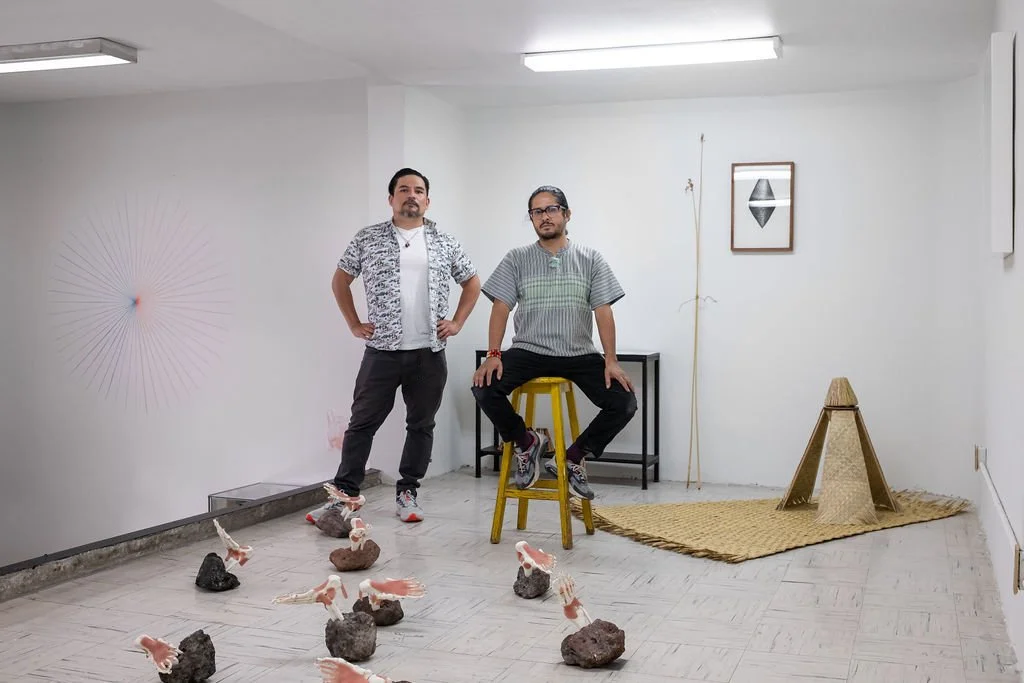
From Sea to Shining Sea
&

Quelites
Glue + Idolwild + Bienal Tlatelolca
Visit Us
Address
Straßburger Straße 53, 10405 Berlin
Opening Hours
Fri, 28 Jun, 7pm
Show on View
29 Jun / 30 Jun, 2–5pm and by appointment 1, 2, 3 Jul
From Sea to Shining Sea Participating artists: Dave Young Kim, Jesse Wiedel, Beth Davila Waldman, Daisy Velasco, Eric Curtis, Marisa Rodriguez, Micke Tong and Nate Zoba.
Quelites Participating artists: Verónica Bape (Mexico), Mazenett & Quiroga (Colombia), Stephanie Quirola (Ecuador)
Images
Marisa Rodriguez, Coin-Op Laundry, 2021, 24 x 18 in, Acrylic on canvas (left)
Stephanie-Quirola,
Camera, editing and effects: Lucas Furtado (right)
About
From Sea to Shining Sea
IDOLWILD is proud to present "From Sea to Shining Sea," a group exhibition offering a critical exploration of North American culture. The exhibition's title derives from the lyrics of the patriotic song "America the Beautiful," composed by Katherine Lee Bates and Samuel Ward 131 years ago. Inspired by Bates' profound experience while sightseeing in Colorado, this song encapsulates a vision of America's natural splendor.
"From Sea to Shining Sea" investigates contemporary American identity through the visual contributions of artists Dave Young Kim, Jesse Weidel, Beth Davila Waldman, Daisy Velasco, Eric Curtis, Marisa Rodriguez, Nate Zoba and Micke Tong. This exhibition provides a multifaceted commentary on what it means to be American in the present day, reflecting diverse perspectives and experiences within the nation's cultural landscape.
Quelites
Quelites (from the Nahuatl quilitl, "edible grass") are herbaceous plants that in Mexico are considered edible in their entirety (leaves, fruits, seeds, stems).They have been consumed since ancient times for their nutritional and symbolic qualities. Although they are currently cultivated, they are still considered wild herbs, originally collected for consumption. The harvest of quelites is done during the rainy season, when the agricultural cycle begins naturally.
Quelites are resilient herbs, whose seasonal nature allows them to grow in adverse environments. This has led them to develop a character that has made them essential in the nutritional culture of the Americas. Making a natural association, the artists who participate in Quelites meet this condition, being all artists who live in countries and cultures different from their own, whose practice is subject to develop within processes of thinking and production more "natural" than "cultivated". The themes they address demonstrate this: myth, matter, time. All of these elements that make up the alchemy of times, turning the future behind, thus releasing an atmospheric vision, by itself stratospheric, of the world.
Invited by Balam Bartolomé und Antonio Monroy.
glue
In the good old tradition of alternative art spaces in Berlin, GLUE is a counter-institution in its own right. Spontaneous and anti-commercial, with no curators, no theme and no press, it began in a basement in Berlin-Prenzlauer Berg in 2004. In a catalytic moment, the space, the art and the vernissage community were to be GLUEd together. Founded by the gallerist Asim Chughtai and the artist DAG (Dag Przybilla) and still realized by DAG in changing constellations and locations, GLUE is one of the oldest independent and privately organized exhibition initiatives in Berlin. The idea that still echoes today has evolved through the process of building a network and a collectivity in opposition to the city's administrative bureaucracy, and through the individuality embedded in the anarchic ethos of the many artists who have exhibited at GLUE over the past 20 years.
IDOLWILD
IDOLWILD celebrates the untamed and free spirit of contemporary art practice. It is our intention to build artist relationships, incubate creative ideas across disciplines and encourage collaboration. Our artist-run gallery hosts performances, events, and encourages partnerships within the artist community.
Bienal Tlatelolca
Bienal Tlatelolca is an artist-run initiative that operates in Central de Maquetas (a model store in operation since 1956) in the Tlatelolco Housing Complex, an urban island-prototype, designed by mexican modernist architect Mario Pani. Since 2019, under the initiative of artists Antonio Monroy and Balam Bartolomé, Bienal Tlatelolca intends to question the concept of “biennial” as an area of speculation in opposition to a space of dialogue that can create knowledge. For the past four years, Bienal Tlatelolca has been unavoidably involved and interested in the social, political and historical events that took place in the area, from the Mesoamerican period to the present, which allowed the project to measure the importance of Tlatelolco as a social, economic and cultural exchange center, which was constructed and stands over ruins, in formal and figurative terms. Tlatelolco relates the destruction and reconstruction of Mexico and raises the architecture and construction of a Latin American identity.



